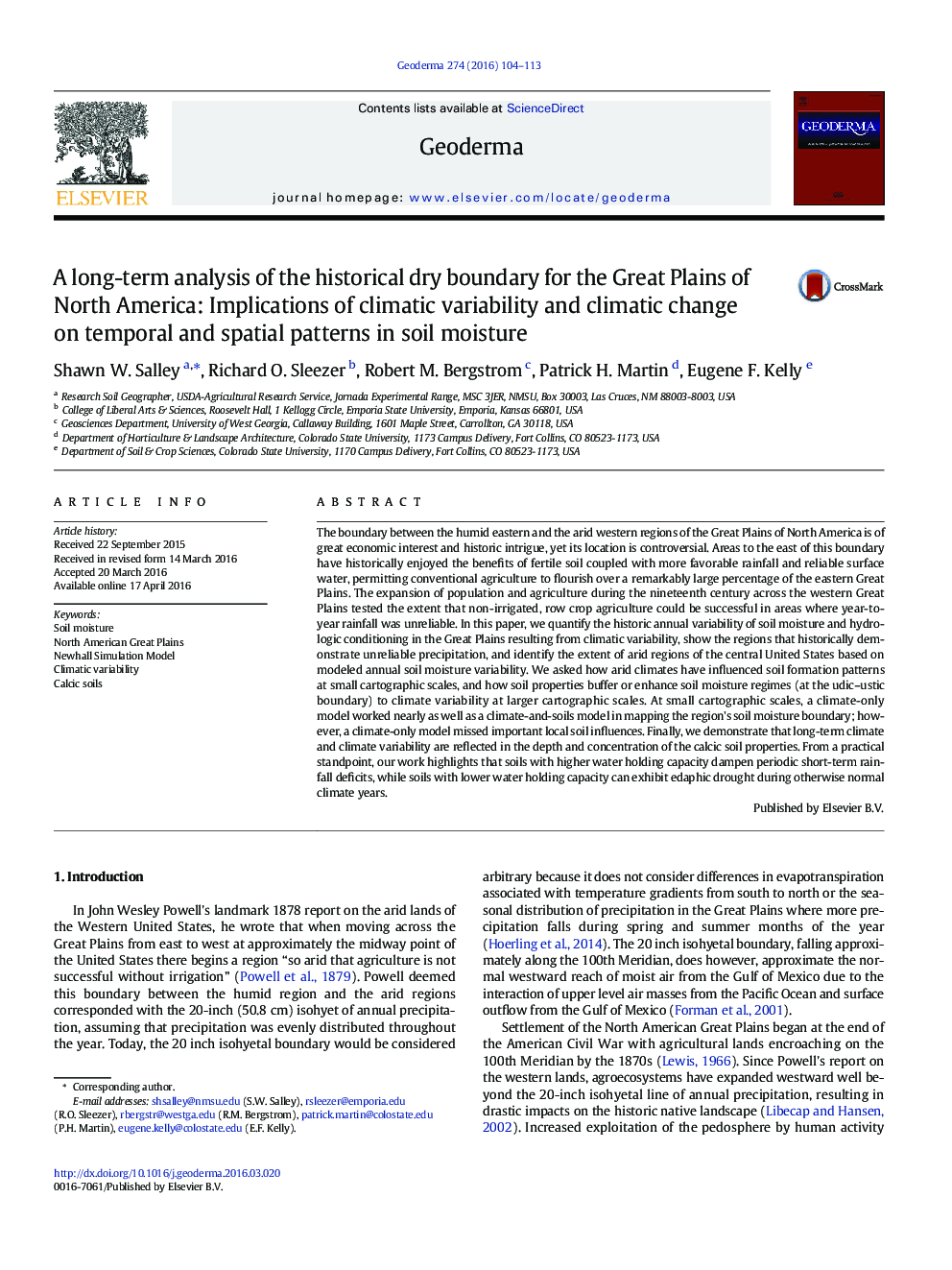| Article ID | Journal | Published Year | Pages | File Type |
|---|---|---|---|---|
| 4572922 | Geoderma | 2016 | 10 Pages |
•We modeled annual soil climate on the North American Great Plains from 1895 to 2014.•Annual soil climate variability offers unique approach to landscape classifications.•Long-term climate is reflected in depth and concentration of calcic soil properties.•Soils with low water holding capacity are more sensitive to climate variability.
The boundary between the humid eastern and the arid western regions of the Great Plains of North America is of great economic interest and historic intrigue, yet its location is controversial. Areas to the east of this boundary have historically enjoyed the benefits of fertile soil coupled with more favorable rainfall and reliable surface water, permitting conventional agriculture to flourish over a remarkably large percentage of the eastern Great Plains. The expansion of population and agriculture during the nineteenth century across the western Great Plains tested the extent that non-irrigated, row crop agriculture could be successful in areas where year-to-year rainfall was unreliable. In this paper, we quantify the historic annual variability of soil moisture and hydrologic conditioning in the Great Plains resulting from climatic variability, show the regions that historically demonstrate unreliable precipitation, and identify the extent of arid regions of the central United States based on modeled annual soil moisture variability. We asked how arid climates have influenced soil formation patterns at small cartographic scales, and how soil properties buffer or enhance soil moisture regimes (at the udic–ustic boundary) to climate variability at larger cartographic scales. At small cartographic scales, a climate-only model worked nearly as well as a climate-and-soils model in mapping the region's soil moisture boundary; however, a climate-only model missed important local soil influences. Finally, we demonstrate that long-term climate and climate variability are reflected in the depth and concentration of the calcic soil properties. From a practical standpoint, our work highlights that soils with higher water holding capacity dampen periodic short-term rainfall deficits, while soils with lower water holding capacity can exhibit edaphic drought during otherwise normal climate years.
